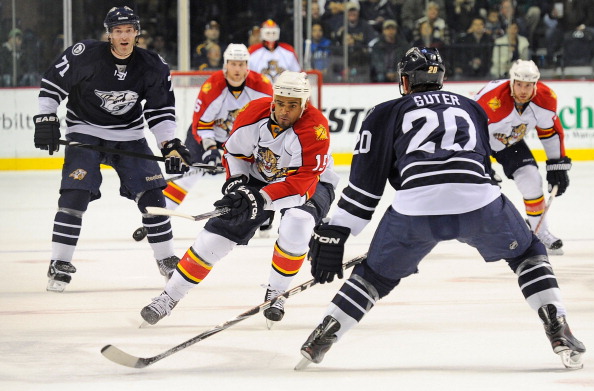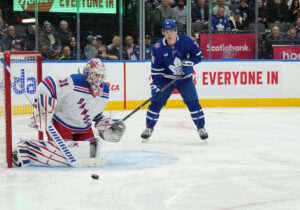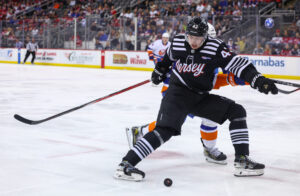NHL player development seems to always result in more questions than answers. How likely is it for a top pick to pan out? What makes a player a “steal”? Last Word On Hockey will be starting a new series on how to properly develop prospects from all different spots throughout the draft. This week’s piece involves draft picks in the back half of the first round and how they were used early in their careers.
NHL Player Development Of First-Round Picks
In the span of 2005 through 2015, there were 84 total selections made between 16th overall and 30th overall on forwards playing in North America. Looking at all 84 forwards, they were split into different categories. Those categories were “Forwards Deemed NHL-Ready and Brought In Immediately When Ready,” “Forwards Near NHL-Ready and Brought In Immediately When Near-Ready,” “Forwards Rushed Slightly,” “Forwards Rushed,” “Forwards Forced,” “A Little Patience,” “Patience,” and “Too Much Patience.”
There were 16 forwards who fell into the fourth category, “forced,” on the list. Of those 16 players, three made their NHL impacts in their DY+4 seasons or later. Those players are Riley Sheahan, Frederik Gauthier, and Kenndal McArdle. In this piece, let’s look at McArdle.
In this piece, we will be using stats from eliteprospects (raw stats) and hockey-reference (ice time). Additionally, the analytics we are using are as follows: even-strength offence goals above replacement (EVO), even-strength defence goals above replacement (EVD), wins above replacement (WAR) and goals above replacement (GAR). Those analytics are from evolving-hockey (subscription required).
NHL Player Development Of Kenndal McArdle
Kenndal McArdle, drafted 20th overall by the Florida Panthers in the 2005 NHL draft, came out of the Moose Jaw Warriors organization of the WHL. In his DY-1 season, McArdle scored eight goals and assists for 16 points in 54 games, for 0.296 points per game. That ranked 76th out of the aforementioned 84 forwards in DY-1 production. The following season, McArdle posted 37 goals and assists for 74 points in 70 games, for 1.057 points per game. That ranked 50th out of those same 84 forwards in DY production. After getting drafted, McArdle would play two more WHL seasons and two AHL seasons before getting an extended look at the NHL level.
In his DY+1 season, McArdle scored 28 goals and 43 assists for 71 points in 72 games with the Warriors, for 0.986 points per game. That ranked 50th out of the 82 forwards still outside the NHL in DY+1 production. In his last WHL season, McArdle would be traded mid-way through the year to the Vancouver Giants. Overall, he scored 19 goals and 23 assists for 42 points in 63 games for 0.667 points per game. That ranked 54th out of the 70 forwards still outside the NHL in DY+2 production.
AHL Time For Kenndal McArdle
McArdle would make the jump to the AHL, playing with the Rochester Americans. With them, he scored five goals and assists for 10 points in 36 games, for 0.278 points per game. That ranked 38th out of the 46 forwards still outside the NHL in DY+3 production. He also saw six ECHL games with the Florida Everblades, scoring four points.
The next season, McArdle would play almost the entire season with the AHL Americans again. He scored 12 goals and assists for 24 points in 58 games, for 0.414 points per game. That ranked 19th out of the 30 forwards still outside the NHL in DY+4 production. McArdle would see three NHL games that season, going scoreless. The following year, his stay at the NHL level would be extended.
How McArdle Was Used
In his first extended stay at the NHL level with the Panthers, he would still split with their AHL team. At the AHL level, he played 18 games, and scored three goals and five assists for eight points. Meanwhile, in the NHL, McArdle saw 19 games, and averaged 8:54 time on ice per game. With that role, he scored just three points. Analytically, he was pretty much a replacement-level player. His EVO (-0.2) and EVD (-0.1) were both slightly below replacement level. However, his WAR (0.1) and GAR (0.3) were slightly above replacement level, bringing some balance.
After a non-impactful rookie year, McArdle would see more AHL time and less NHL time. Playing 54 AHL games, he scored 14 goals and 12 assists for 26 points. Meanwhile, he would see just 11 NHL games, and averaged 9:57 per game. Even though he averaged over a minute more per game, he saw less games, and went scoreless. His analytics were also very poor this time around, with an EVO (-2) and EVD (-1.4) being much worse. That led to his WAR (-0.7) and GAR (-3.9) to be very poor as well.
Kenndal McArdle Sees More Of The Same In Year Three
In year three, McArdle would see the same AHL/NHL split as year two. McArdle would also play for two new franchises that season as well. In the AHL, he played with the St. John’s IceCaps (Winnipeg Jets) and the Portland Pirates (Arizona Coyotes). Overall, he played 54 AHL games, and scored 10 goals and eight assists for 18 points. Meanwhile, he saw just nine NHL games with the Jets that year, averaging a paltry 6:07 per game. In that very small role, he once again went scoreless. Analytically, he was still below replacement level, but *improved* (not really improved, just less games for his metrics to be worse). His EVO (-0.4) and EVD (-0.3) were closer to his rookie year totals, which is better without the added context of sample and time on ice. Additionally, his WAR (-0.2) and GAR (-1.1) were still bad, but better, again without the context.
Following that third season, in 2011-12, McArdle would never see the NHL again. He would play the entire 2012-13 season split between the AHL and ECHL. He would then leave for Allsvenskan (Sweden) to play for VIK Vasteras HK. That 2013-14 season in Allsvenskan was his last recorded season playing professional hockey. McArdle has since retired.
Kenndal McArdle Did Not Pan Out, Made More Painful By Who Went Next
Hindsight is key. But the very next selection belonged to the Toronto Maple Leafs, who selected a goalie you may know, by the name of Tuukka Rask. It is fair to say that the Panthers were not setting out to take a goaltender in the first round. Except for the fact that their 32nd overall selection, just 12 picks later, was used on a goalie named Tyler Plante. Has to be one of the biggest fumbles in draft history.
There were two forwards who people may have heard of that also went off the board to round off the first round who would have been better options. Again, to be fair to the Panthers, these two forwards did play at a low level in their draft years, before translating just fine the following season at higher levels. Those forwards are T.J. Oshie and Andrew Cogliano. Oshie was playing high school hockey (at a ridiculous level, by the way) and Cogliano played in the OPJHL (also at a very high level). Both went the NCAA route and succeeded, which was not a sure thing. But they did, and it proved to make their selection of McArdle a head-scratcher. But, the complete miss on passing up Tuukka Rask and instead using a pick on Plante (who never played a single NHL game) just 12 picks later is the bigger mistake in this instance.
Junior league stats via Elite Prospects, NHL stats via Hockey Reference, NHL analytics via Evolving Hockey
Main photo:
Embed from Getty Images






